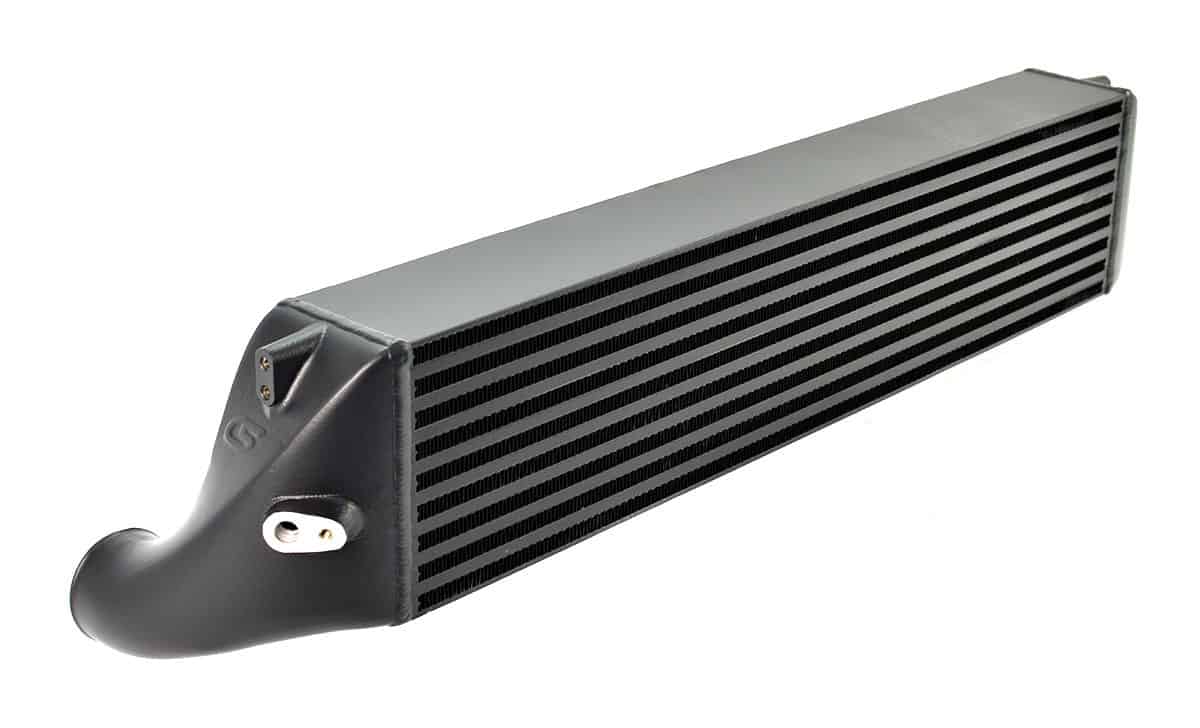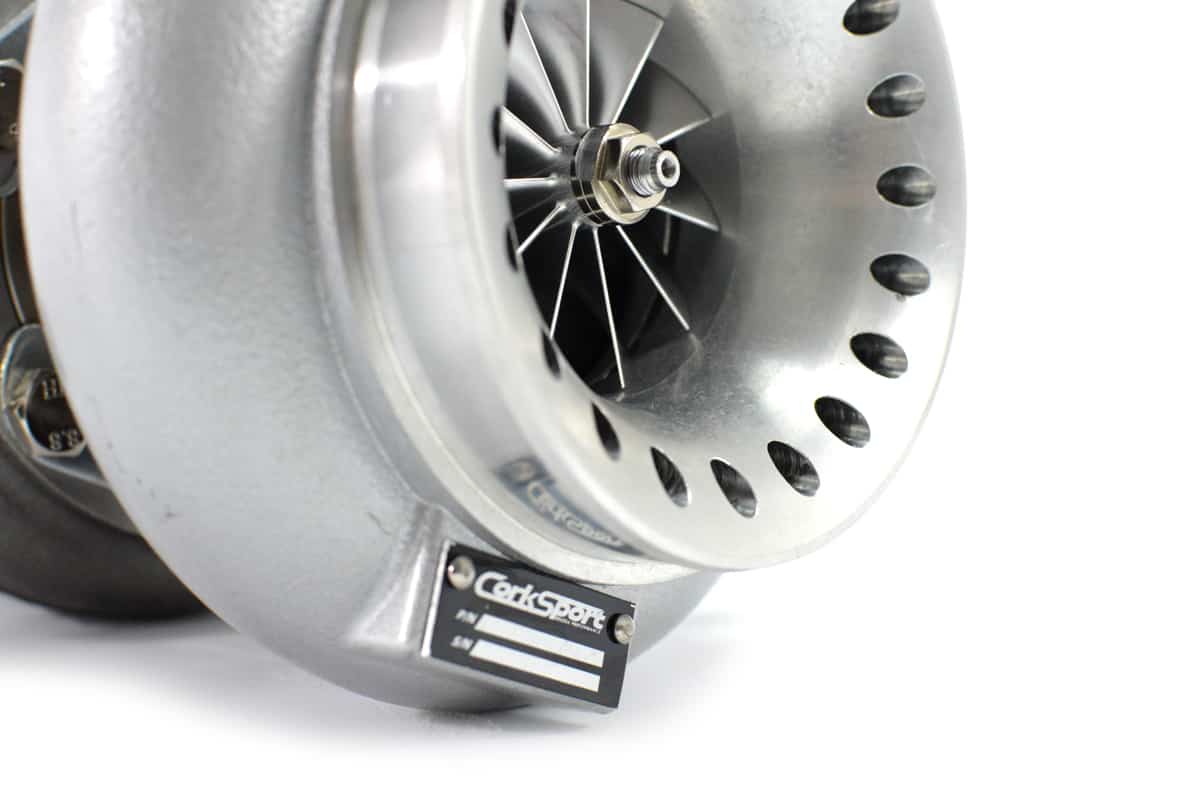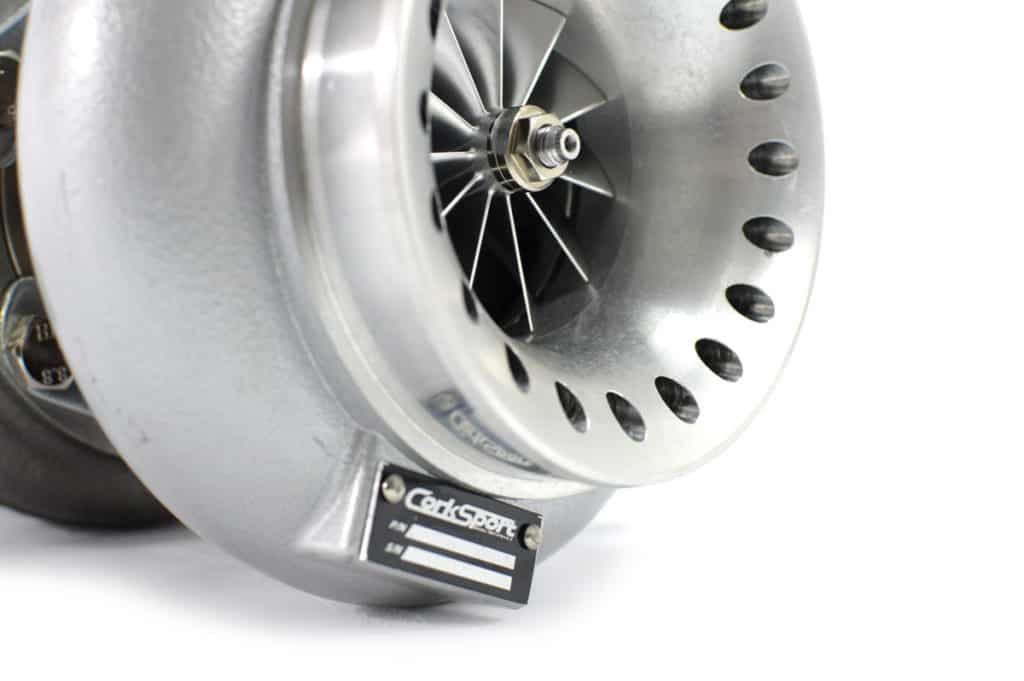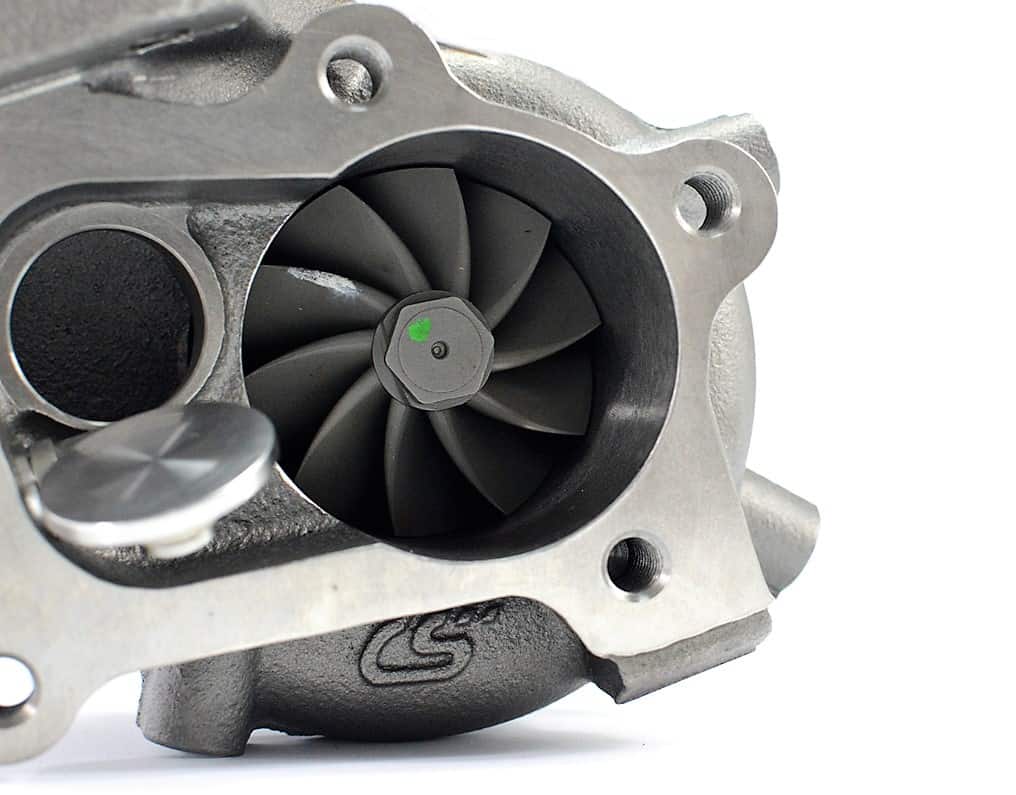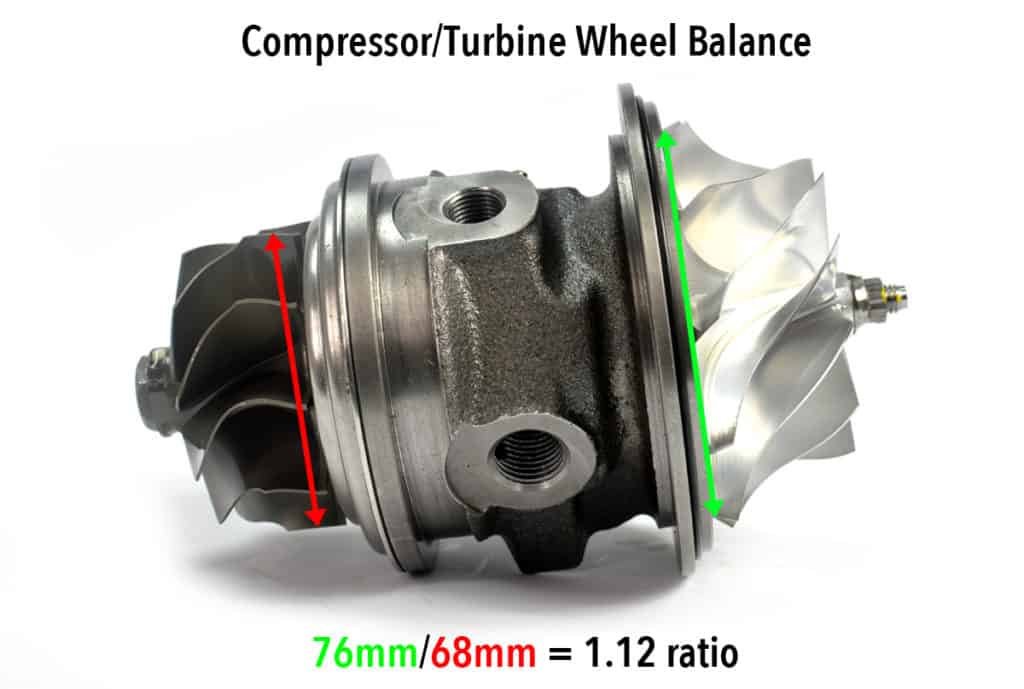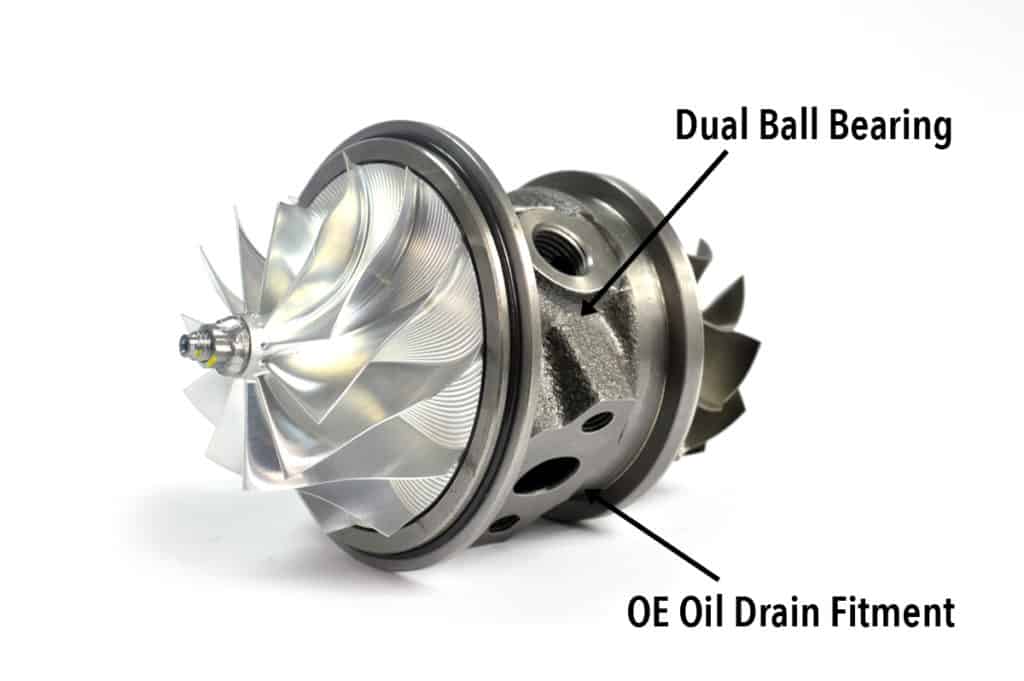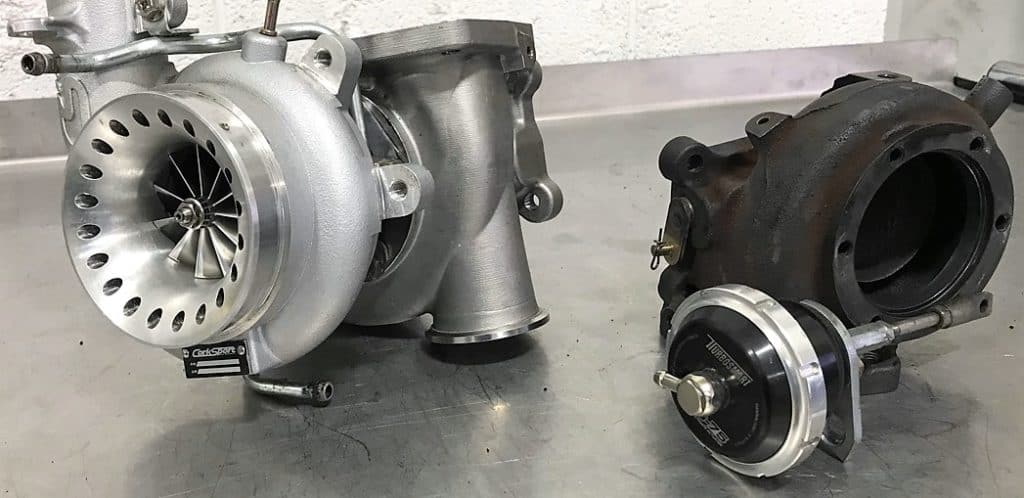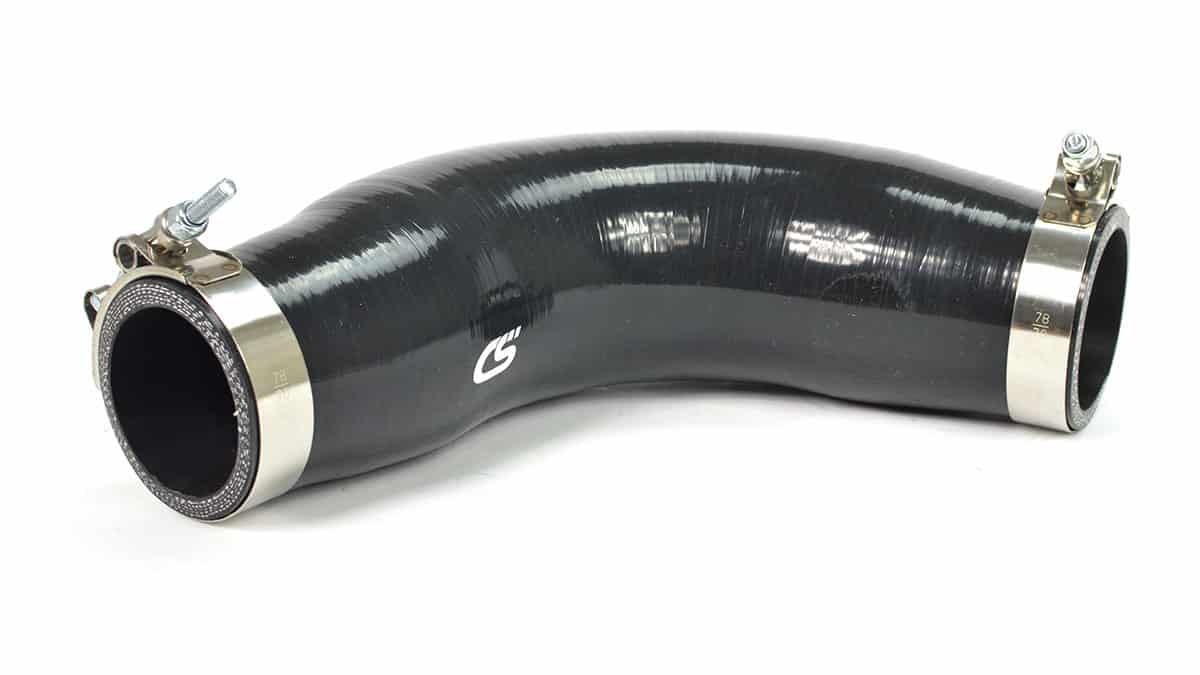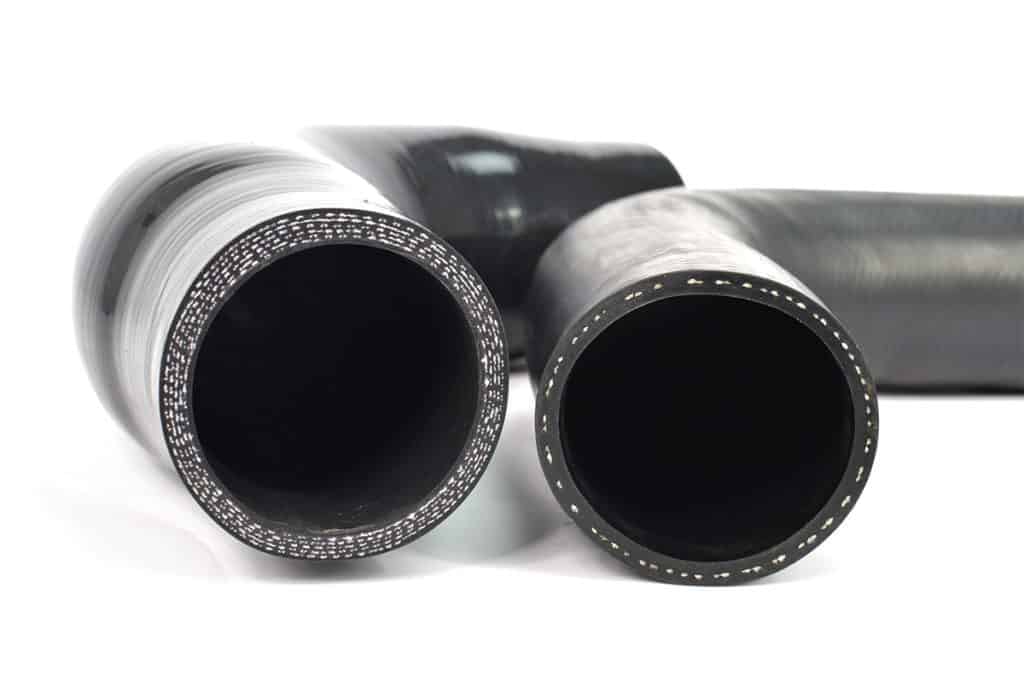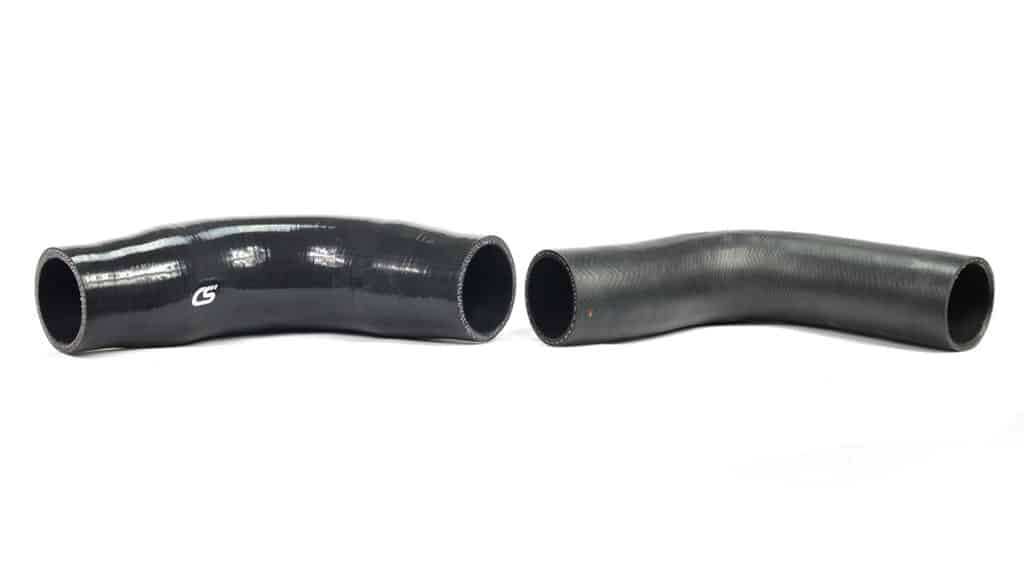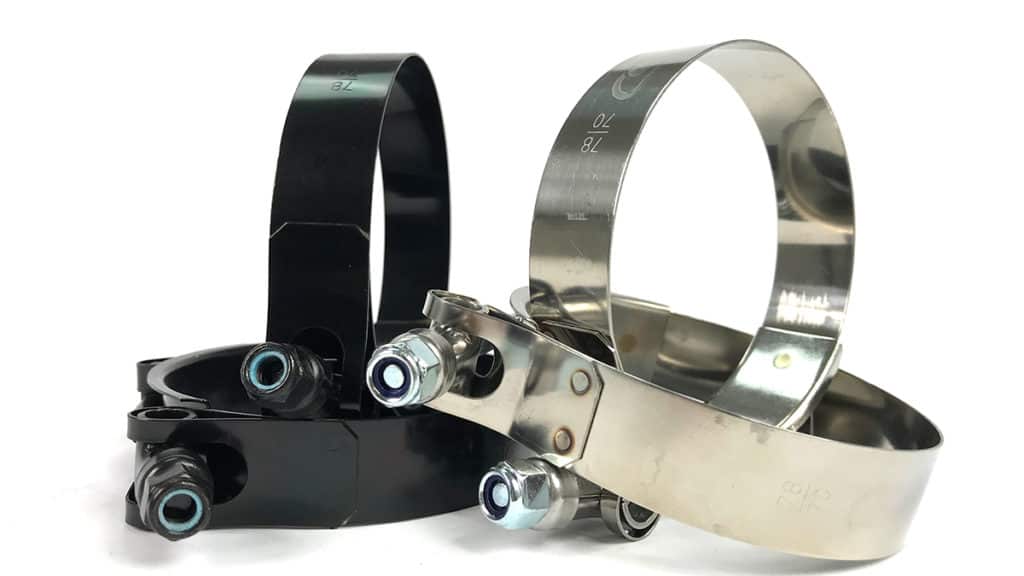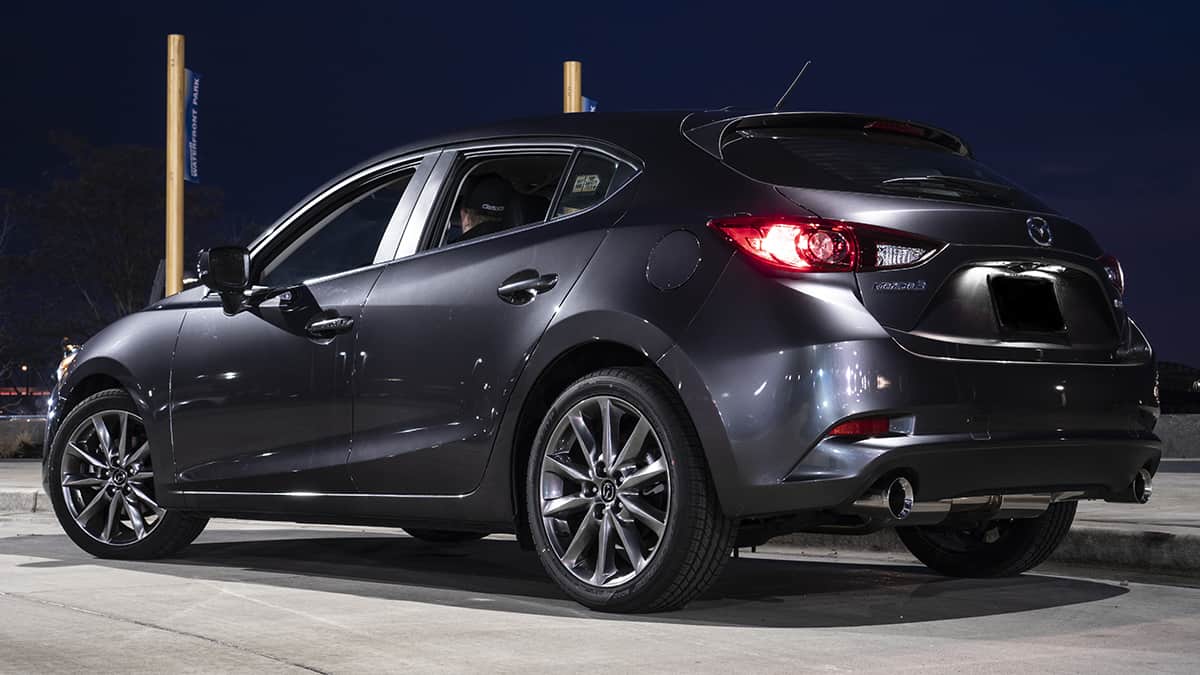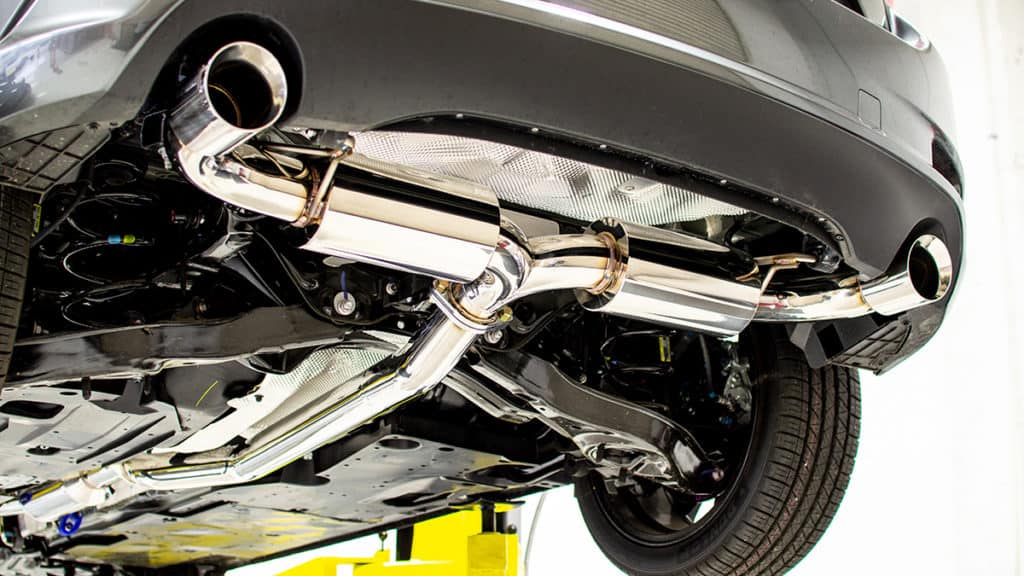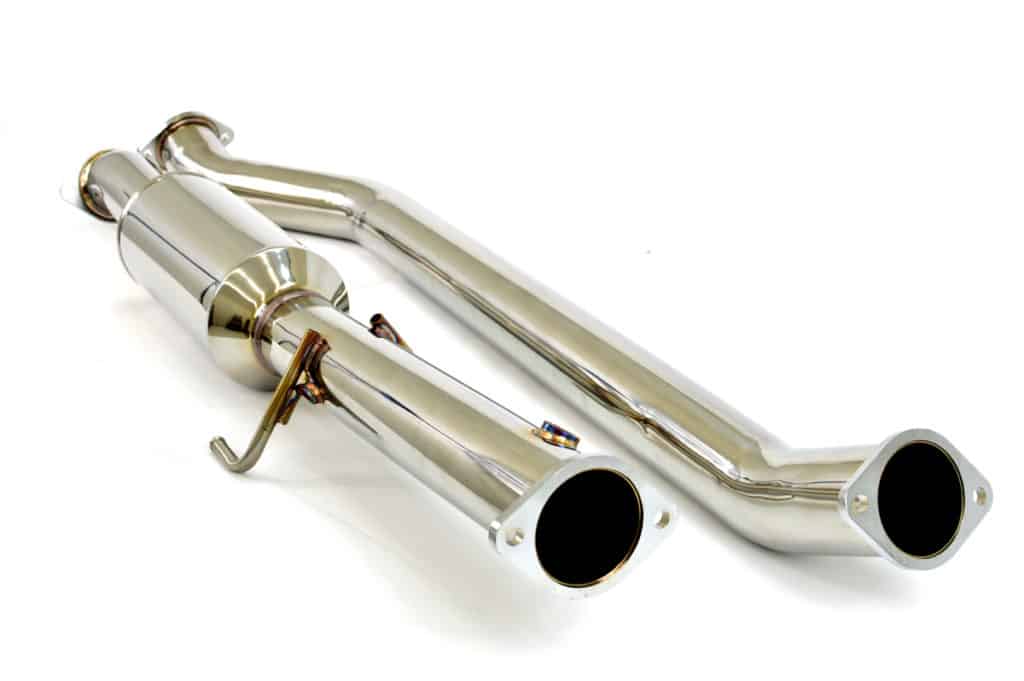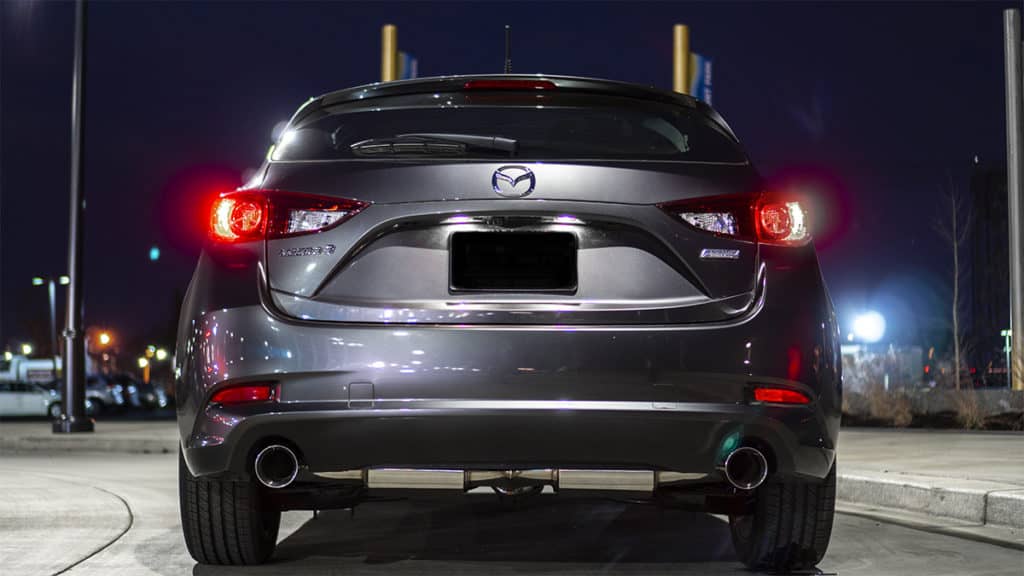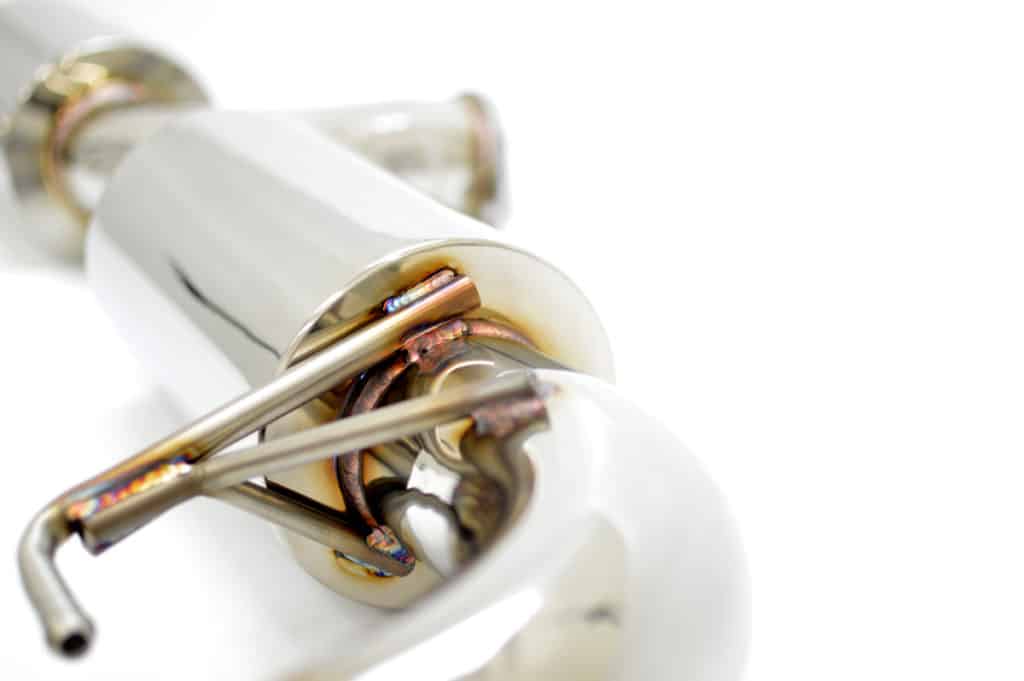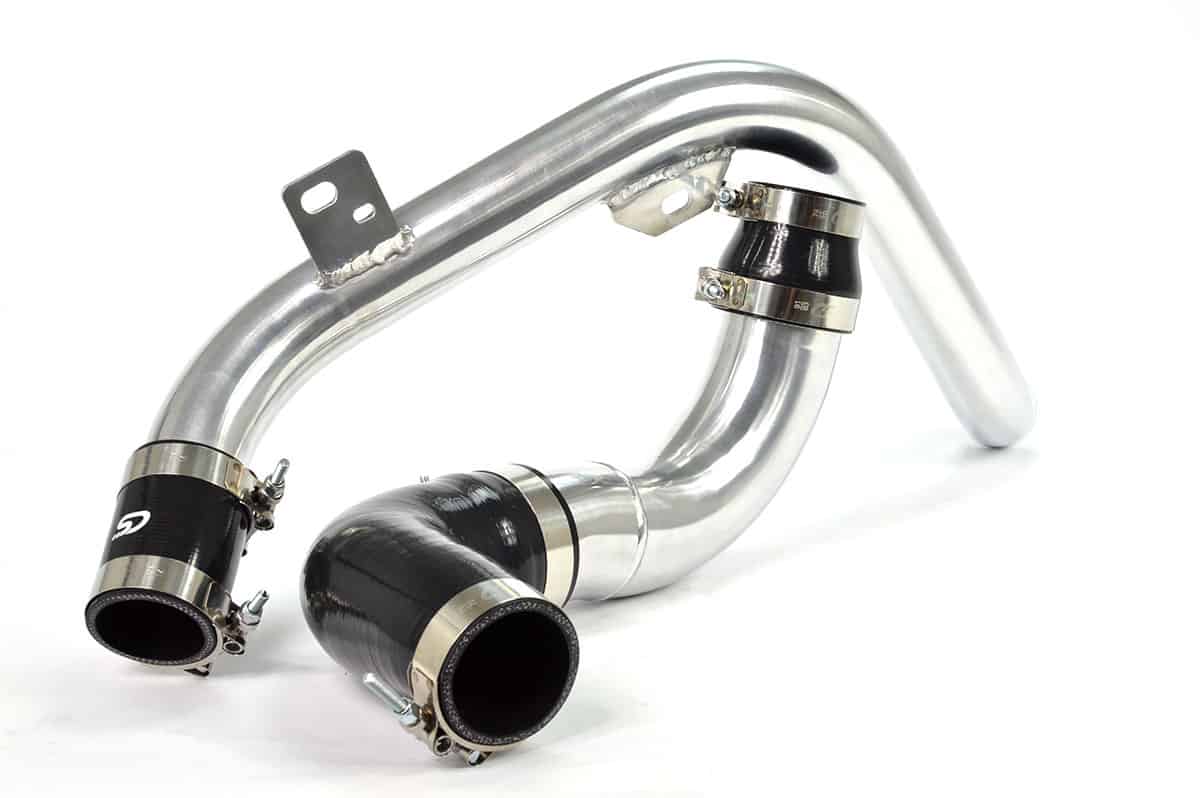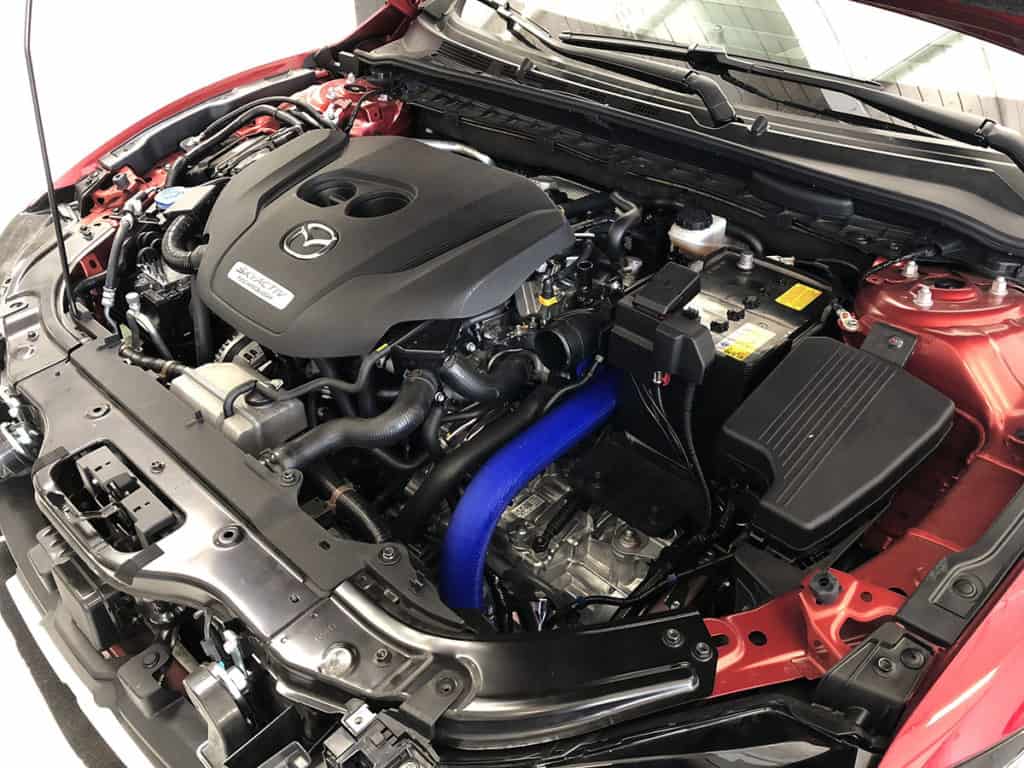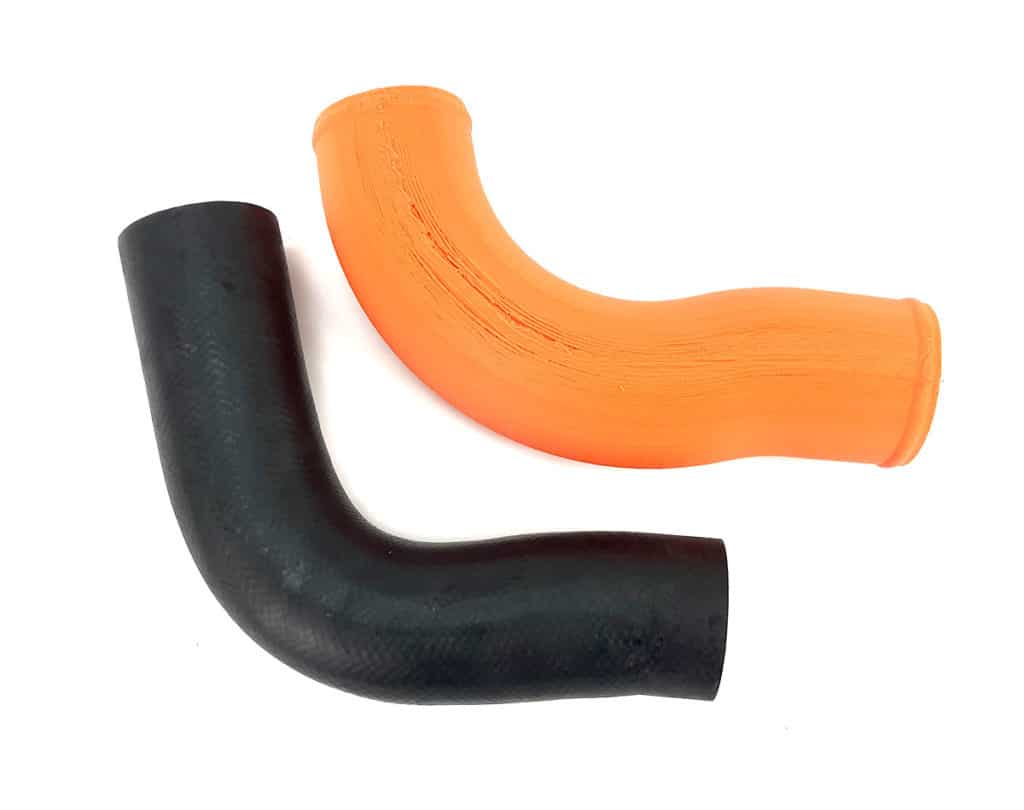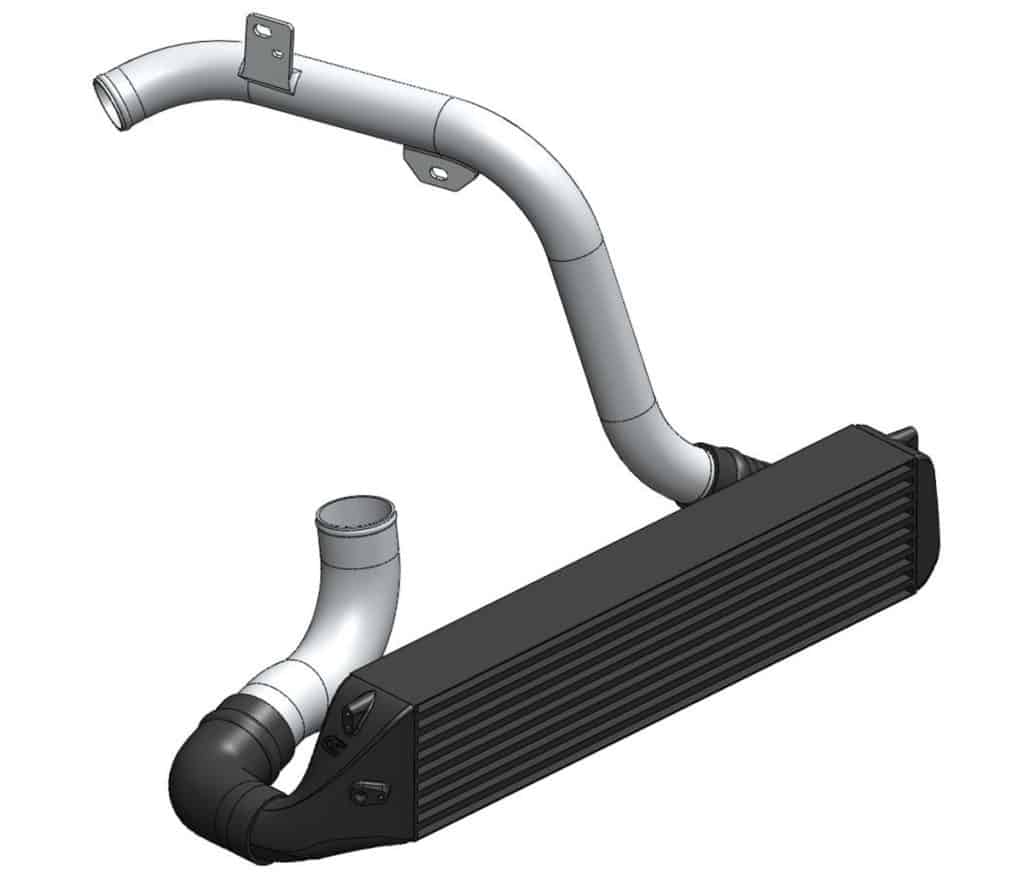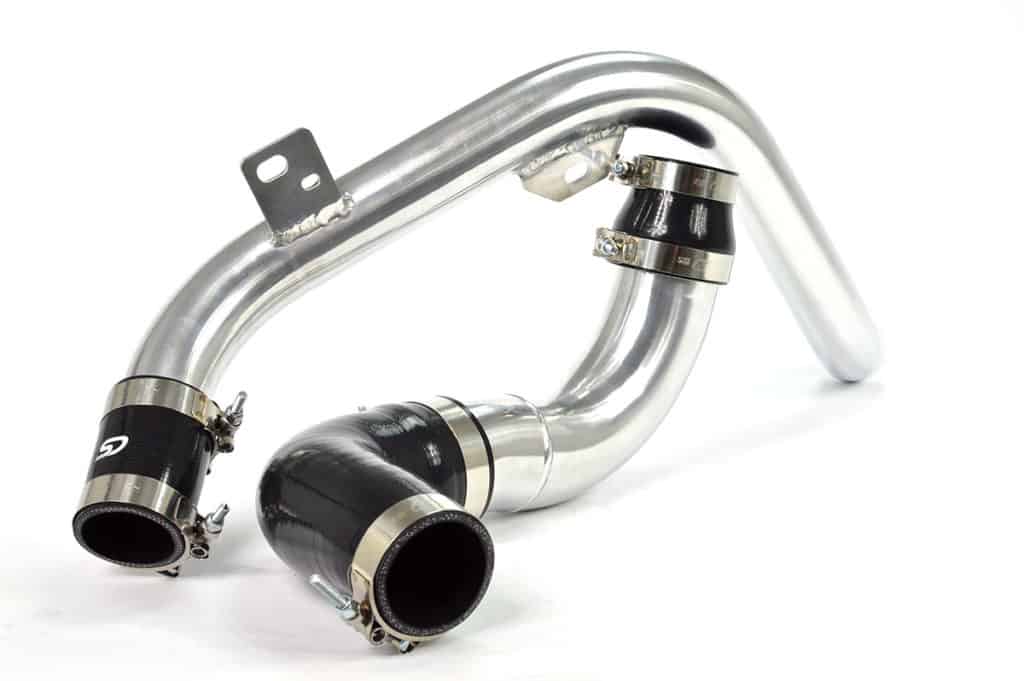It’s time to break down our design for the CorkSport Performance Intercooler Upgrade for the Mazda 6 2.5T. We have covered both the OEM intercooler and piping, and our design plan for the upcoming Sky-T intercooler piping upgrade in previous blogs, but today’s focus is the intercooler itself. Intercoolers are a delicate balancing act between size, cooling efficiency, and pressure drop so naturally things can get a little complicated. Buckle up and stay with us, and be sure to drop any questions you may have down below.
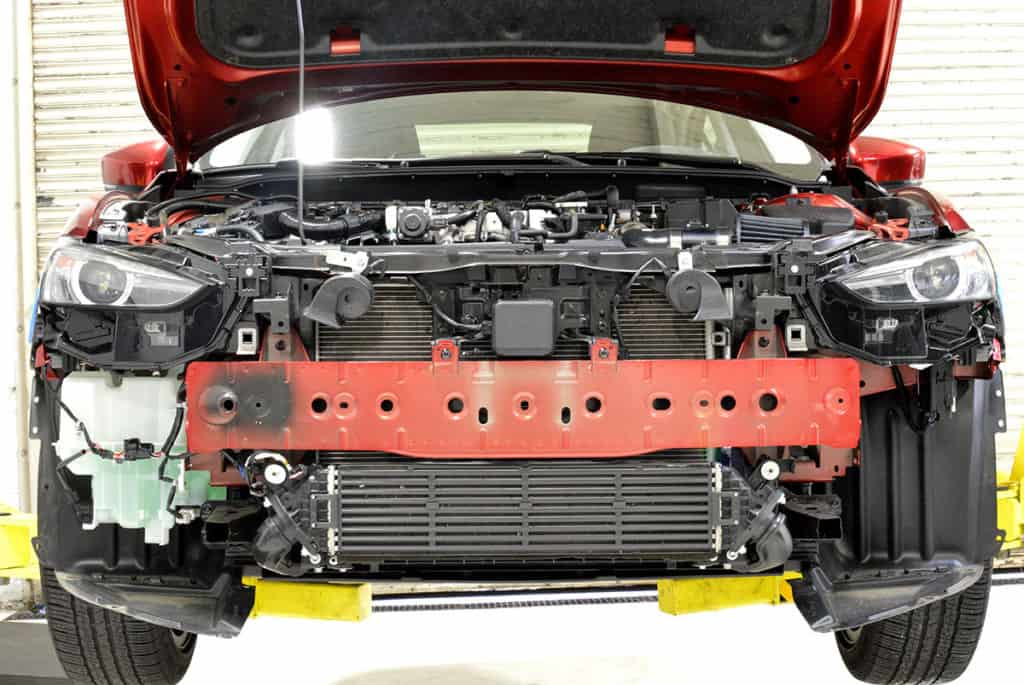
Taking a look at the stock intercooler mounted on the Mazda 6 (shown above) shows us quickly where our size constraints lie. With the large crash bar, we cannot go too much larger in height without trimming the crash bar, bumper, or both. However, there is a ton of room for added thickness and better end-tank design that can really help increase the width of the intercooler. The stock intercooler core is 24.5” wide, 5.5” tall, and 2.625” thick. Our plan is to fit a 27” wide, 6” tall, and 3.5” core without any trimming. This sizing combined with a low-pressure drop will be good for 400WHP with no issues! Because the Mazda 6 comes with just around 200WHP from the factory, this sized core provides plenty of room for upgrading down the road without causing excessive boost lag that can occur if an intercooler is simply too big. Check out a prototype CorkSport intercooler mounted on the car below.
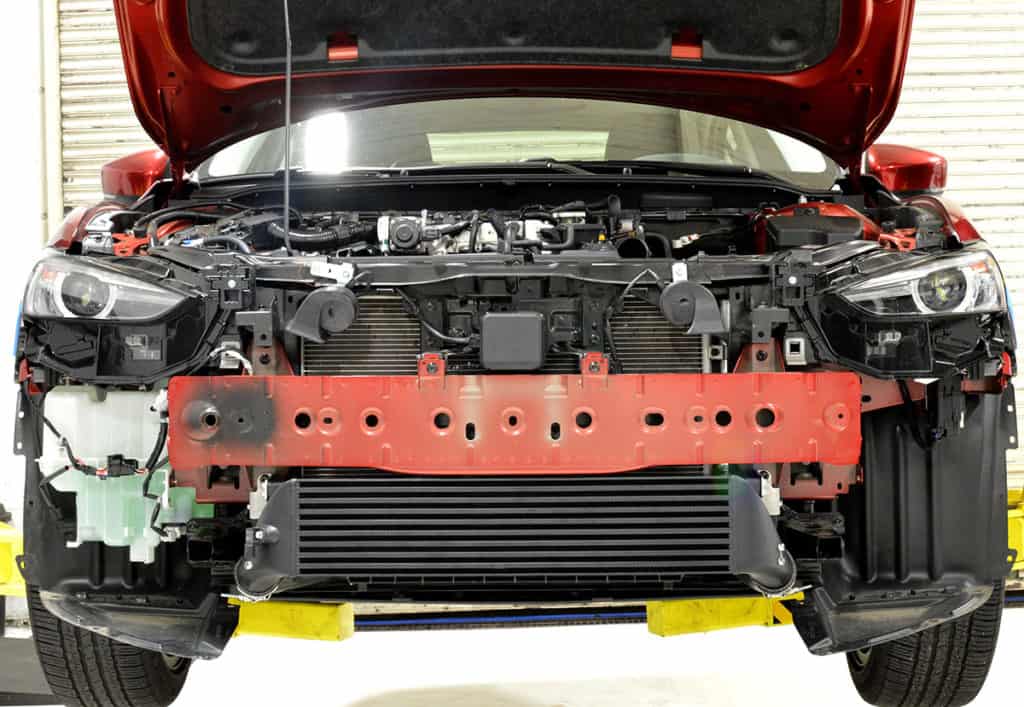
Now that size is taken care of, let’s move on to cooling efficiency and pressure drop of the CorkSport intercooler for the SkyActiv 2.5T. These are tied closely together as getting extremely high cooling efficiency usually means high-pressure drop and vice versa. Just so we’re on the same page, cooling efficiency is how well the intercooler cools off the pressurized air that passes through it. So a highly efficient intercooler will be able to bring the boost temperatures down similar to the ambient air temperature. Pressure drop is exactly what it sounds like, a loss in pressure from the inlet to the outlet of the intercooler which can be caused by a number of things: poor end-tank design, too many intercooler fins, or simply poor flow distribution in the intercooler. Too large of a pressure drop means lower boost pressures reaching your engine and/or your turbocharger working harder to achieve the same boost levels.

Pressure drop and cooling efficiency are influenced primarily by two things: fin density and end-tank design. Fin density is basically how many fins the boosted air must pass over when traversing the intercooler. More fins = better cooling efficiency, but also more pressure drop. To choose the best core for the SkyActiv 2.5T we plan to use multiple different fin densities and test each for power, cooling efficiency, and pressure drop. While we can get pretty close based on our work from the CS Mazdaspeed Intercoolers, it’s always best to test and identify the best one for each platform. With this extensive testing, we can reach our goal of improved cooling efficiency, lower pressure drop, more power, and no CELs.
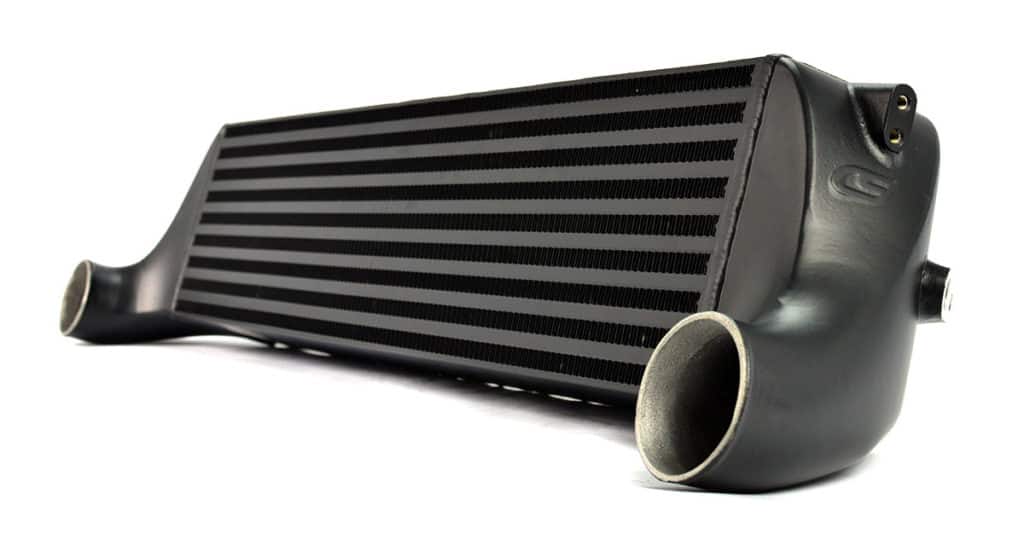
End-tank design is critical as it determines how the air reaches the core of the intercooler. Sharp bends, poor air distribution, and small inlet/outlet size all adversely affect the performance of the intercooler. To fit the core size we want, we had to do away with the plastic inlet and outlet pipes of the stock intercooler. This was advantageous as it gave us more room to have a smooth-flowing end-tank that distributes air well to all the runners and does away with the sharp corners present in the OEM end-tanks. In addition, we were able to increase the inlet and outlet size of the intercooler to 2.5”. This is a fairly standard size that has shown to work well for the Mazdaspeeds with stock power and without choking flow way up to Barett’s 600+ WHP.
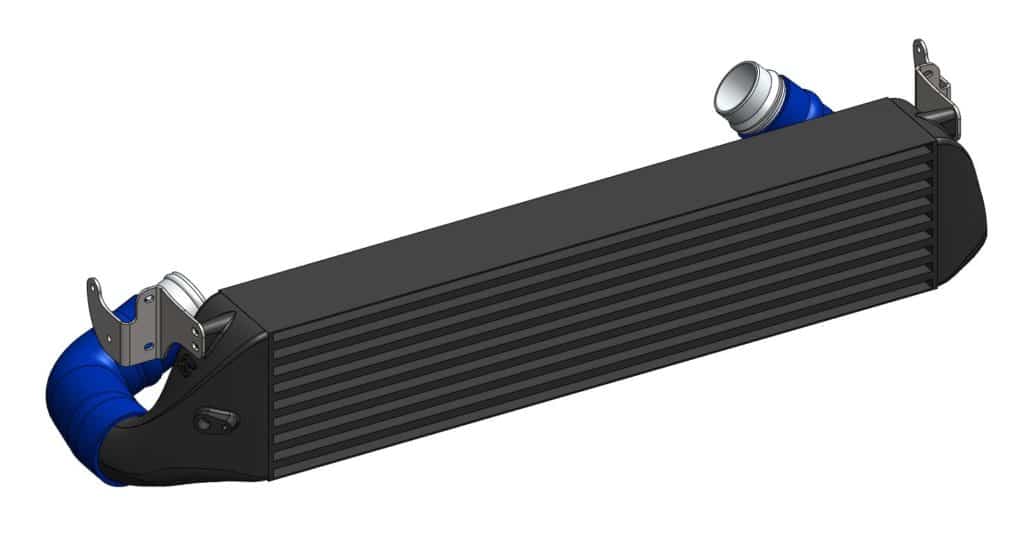
Those of you with a keen eye have realized that the connection between the CorkSport front mount intercooler (FMIC) and the OEM Intercooler is not the same. As shown in the CAD rendering above, each intercooler kit will come with the silicone and custom adapters that are needed to work with the OEM piping. If you decide to upgrade to the CS intercooler piping kit, later on, the CorkSport Intercooler for SkyActiv 2.5T will not need to be removed, and you will only need to change some silicone parts.
We will have more info on this kit coming soon, with the next blog covering our testing of the different core designs using a few new toys from AEM Electronics. Be sure to check out the product listing for more info, and to be notified when the intercooler is available. Last but not least, CX-9 Turbo and CX-5 Turbo owners, we are 99% sure this kit will also work on your rides but we plan on validating fitment before release!
-Daniel @ CorkSport
Connect with us
You may also like
- It’s Go Time with The Mazda 6 Turbo Kit
- Mazda 6 Turbo Down Pipe
- 2018+ Mazda 6 2.5T OEM Intercooler & Piping Analysis


